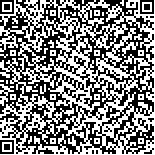| 摘要: |
| 目的 畜产品消费占食物消费比重逐渐上升,中国快速城镇化进程与食物消费结构升级已经形成了历史性的交汇,但测度两者联系的研究不够充裕。文章探究两者之间是否存在内在联系,有助于弥补城镇化和食物消费关联性的文献缺口,也可以在城镇化发展过程中给相关部门提供一定参考。方法 在统计描述中国畜产品消费历史特征的基础上,通过中国农业产业模型(CASM)对比分析不同城镇化背景下畜产品消费趋势,详细分析城镇化给畜产品消费带来的增长效应和结构效应。结果 城镇化率越高,畜产品消费量就越多。从消费结构上看,未来脂肪和能量含量较高的猪肉消费比重下降较为明显,而富含蛋白质的牛羊肉、蛋类消费比重稍有增长,蛋白质和微量元素兼重的奶类消费比重上升较为明显。脂肪含量相对较少且环保压力较小的禽类消费增长速度是肉类中最快的,且其增速在未来或将逐渐超过奶类。从城乡角度看,农村居民畜产品增长速度快于城镇,但城镇总体畜产品消费量多于农村。结论 最后建议优化畜牧业产业布局、标准化流通体系,加快推进农业结构调整,实现粮经饲统筹、农牧渔结合发展;健全畜产品消费可追溯体系,在做好畜产品检验检疫的基础上,准确把握畜产品消费趋势,引导居民合理消费。 |
| 关键词: 城镇化增长 畜产品消费 局部均衡模型 趋势分析 |
| DOI:10.7621/cjarrp.1005-9121.20210427 |
| 分类号:F323.7 |
| 基金项目:国家自然科学基金项目“城镇化对我国农业生产的影响机理与对策研究”(71673274);中央级公益性科研院所基本科研业务费专项(161005201903-5);中国农业科学院科技创新工程“国外农业经济与贸易”(ASTIP-IAED-2020-03);农业农村部2019年监测统计(125161005000150005) |
|
| COMPARATIVE ANALYSIS OF COMSUPTION TRENDS OF LIVESTOCK PRODUCTS UNDER DIFFERENT URBANIZATION GROWTH SCHEMES |
|
Han Chenxue1, Peng Chao2, Liu Heguang1
|
|
1.Institute of Agricultural Economics and Development, Chinese Academy of Agricultural Sciences,Beijing 100081, China;2.Rural Economic Research Center, Ministry of Agriculture and Rural Affairs, Beijing 100810, China
|
| Abstract: |
| The proportion of animal products consumption in food consumption is gradually increasing, and China's rapid urbanization process and the upgrading of food consumption structure have formed a historic intersection, but there are not enough research to measure the connection between them. This paper aims to explore whether there is the relationship between them, which contributes to fill the literature gap between urbanization and food consumption, and making policy reserve in the process of urbanization development. On the basis of statistics, this paper described the historical characteristics of China's animal products consumption. And made a comparative analysis of livestock product consumption trends under different urbanization backgrounds by performing Chinese Agricultural industry model (CASM), and analyzed the growth effect and structural effect of urbanization on livestock product consumption in detail. We can draw the conclusion that the higher urbanization rate related with the greater consumption of animal products. From the perspective of consumption structure, the proportion of pork consumption with high fat and energy content in the future decreased significantly, while the proportion of beef, mutton and eggs with high protein content increased slightly, and the proportion of milk consumption with heavy protein and trace elements increased most obviously. Poultry, which has relatively little fat and less environmental pressure, had seen the fastest growth in meat consumption and was expected to exceed milk in the future. From the urban-rural perspective, the growth rate of livestock products of rural residents was faster than urban residents, but the total consumption of livestock products of urban residents was higher than rural residents. Finally, it is suggested to optimize the layout of animal husbandry industry, standardize the circulation system, accelerate the adjustment of agricultural structure, and realize the coordinated development of grain, forage, animal husbandry and fishery. We should also improve the traceability system of animal products consumption and accurately grasp the consumption trend of animal products and guide residents to consume reasonably on the basis of inspection and quarantine of animal products. |
| Key words: urbanization growth consumption of animal products Partial Equilibrium Model trend analysis |

